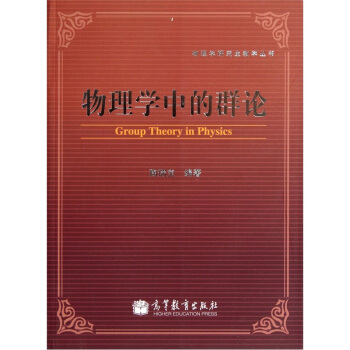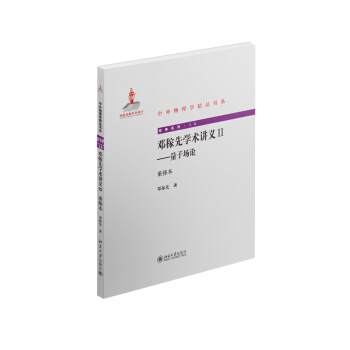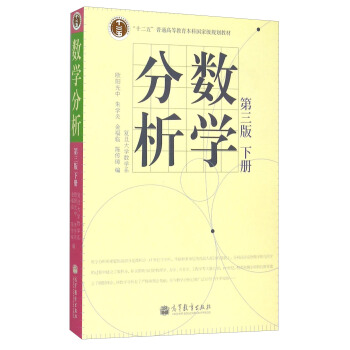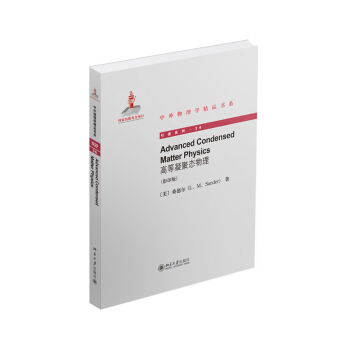![量子场论 [Quantum Field Theory]](https://pic.tinynews.org/10104530/bc88533f-4ecb-47a9-b6cc-6a8b192bf75c.jpg)

具体描述
内容简介
I have tried to make the subject as accessible to beginners as possible. There are three main aspects to my approach. Logical development of the basic concepts. This is, of course, very different from the historical development of quantum field theory, which, like the historical development of most worthwhile subjects, was filled with inspired guesses and brilliant extrapolations of sometimes fuzzy ideas, as well as its fair share of mistakes, misconceptions, and dead ends. None of that is in this book. From this book, you will (I hope) get the impression that the whole subject is effortlessly clear and obvious, with one step following the next like sunshine after refreshing rain.作者简介
作者:(美国)思雷德尼奇(MarkSrednicki)内页插图
目录
Preface for studentsPreface for instructors
Acknowledgments
Part I Spin Zero
1 Attempts at relativistic quantum mechanics
2 Lorentz invariance (prerequisite: 1)
3 Canonical quantization of scalar fields (2)
4 The spin-statistics theorem (3)
5 The LSZ reduction formula (3)
6 Path integrals in quantum mechanics
7 The path integral for the harmonic oscillator (6)
8 The path integral for free field theory (3, 7)
9 The path integral for interacting field theory (8)
10 Scattering amplitudes and the Feynman rules (5, 9)
11 Cross sections and decay rates (10)
12 Dimensional analysis with h = c = i (3)
13 The Lehmann-Kallen form of the exact propagator (9)
14 Loop corrections to the propagator (10, 12, 13)
15 The one-loop correction in Lehmann-Kallen form (14)
16 Loop corrections to the vertex (14)
17 Other 1PI vertices (16)
18 Higher-order corrections and renormalizability (17)
19 Perturbation theory to all orders (18)
20 Two-particle elastic scattering at one loop (19)
21 The quantum action (19)
22 Continuous symmetries and conserved currents (8)
23 Discrete symmetries: P, T, C, and Z (22)
24 Nonabelian symmetries (22)
25 Unstable particles and resonances (14)
26 Infrared divergences (20)
27 Other renormalization schemes (26)
28 The renormalization group (27)
29 Effective field theory (28)
30 Spontaneous symmetry breaking (21)
31 Broken symmetry and loop corrections (30)
32 Spontaneous breaking of continuous symmetries (22, 30)
Part II Spin One Half
33 Representations of the Lorentz group (2)
34 Left- and right-handed spinor fields (3, 33)
35 Manipulating spinor indices (34)
36 Lagrangians for spinor fields (22, 35)
37 Canonical quantization of spinor fields I (36)
38 Spinor technology (37)
39 Canonical quantization of spinor fields II (38)
40 Parity, time reversal, and charge conjugation (23, 39)
41 LSZ reduction for spin-one-half particles (5, 39)
42 The free fermion propagator (39)
43 The path integral for fermion fields (9, 42)
44 Formal development of fermionic path integrals (43)
45 The Feynman rules for Dirac fields (10, 12, 41, 43)
46 Spin sums (45)
47 Gamma matrix technology (36)
48 Spin-averaged cross sections (46, 47)
49 The Feynman rules for Majorana fields (45)
50 Massless particles and spinor helicity (48)
51 Loop corrections in Yukawa theory (19, 40, 48)
52 Beta functions in Yukawa theory (28, 51)
53 Functional determinants (44, 45)
Part III Spin One
54 Maxwells equations (3)
55 Electrodynamics in Coulomb gauge (54)
56 LSZ reduction for photons (5, 55)
57 The path integral for photons (8, 56)
58 Spinor electrodynamics (45, 57)
59 Scattering in spinor electrodynamics (48, 58)
60 Spinor helicity for spinor electrodynamics (50, 59)
61 Scalar electrodynamics (58)
62 Loop corrections in spinor electrodynamics (51, 59)
63 The vertex function in spinor electrodyna, mics (62)
64 The magnetic moment of the electron (63)
65 Loop corrections in scalar electrodynamics (61, 62)
66 Beta functions in quantum electrodynamics (52, 62)
67 Ward identities in quantum electrodynamics I (22, 59)
68 Ward identities in quantum electrodynamics II (63, 67)
69 Nonabelian gauge theory (24, 58)
70 Group representations (69)
71 The path integral for nonabelian gauge theory (53, 69)
72 The Feynman rules for nonabelian gauge theory (71)
73 The beta function in nonabelian gauge theory (70, 72)
74 BRST symmetry (70, 71)
75 Chiral gauge theories and anomalies (70, 72)
76 Anomalies in global symmetries (75)
77 Anomalies and the path integral for fermions (76)
78 Background field gauge (73)
79 Gervais-Neveu gauge (78)
80 The Feynman rules for N x N matrix fields (10)
81 Scattering in quantum chromodynamics (60, 79, 80)
82 Wilson loops, lattice theory, and confinement (29, 73)
83 Chiral symmetry breaking (76, 82)
84 Spontaneous breaking of gauge symmetries (32, 70)
85 Spontaneously broken abelian gauge theory (61, 84)
86 Spontaneously broken nonabelian gauge theory (85)
87 The Standard Model: gauge and Higgs sector (84)
88 The Standard Model: lepton sector (75, 87)
89 The Standard Model: quark sector (88)
90 Electroweak interactions of hadrons (83, 89)
91 Neutrino masses (89)
92 Solitons and monopoles (84)
93 Instantons and theta vacua (92)
94 Quarks and theta vacua (77, 83, 93)
95 Supersymmetry (69)
96 The Minimal Supersymmetric Standard Model (89, 95)
97 Grand unification (89)
Bibliography
Index
前言/序言
Quantum field theory is the basic mathematical language that is used to describe and analyze the physics of elementary particles. The goal of this book is to provide a concise, step-by-step introduction to this subject, one that covers all the key concepts that are needed to understand the Standard Model of elementary particles, and some of its proposed extensions.In order to be prepared to undertake the study of quantum field theory, you should recognize and understand the following equations:
This list is not, of course, complete; but if you are familiar with these equations, you probably know enough about quantum mechanics, classical mechanics, special relativity, and electromagnetism to tackle the material in this book.
Quantum field theory has the reputation of being a subject that is hard to learn. The problem, I think, is not so much that its basic ingredients are unusually difficult to master (indeed, the conceptual shift needed to go from quantum mechanics to quantum field theory is not nearly as severe as the one needed to go from classical mechanics to quantum mechanics), but rather that there are a lot of these ingredients. Some are fundamental, but many are just technical aspects of an unfamiliar form of perturbation theory.
In this book, I have tried to make the subject as accessible to beginners as possible. There are three main aspects to my approach.
Logical development of the basic concepts. This is, of course, very different from the historical development of quantum field theory, which, like the historical development of most worthwhile subjects, was filled with inspired guesses and brilliant extrapolations of sometimes fuzzy ideas, as well as its fair share of mistakes, misconceptions, and dead ends. None of that is in this book. From this book, you will (I hope) get the impression that the whole subject is effortlessly clear and obvious, with one step following the next like sunshine after refreshing rain.
Illustration of the basic concepts with the simplest examples. In most fields of human endeavor, newcomers are not expected to do the most demanding tasks right away. It takes time, dedication, and lots of practice to work up to what the accomplished masters are doing. There is no reason to expect quantum field theory to be any different in this regard. Therefore, we will start off by analyzing quantum field theories that are not immediately applicable to the real world of electrons, photons, protons, etc., but that will allow us to gain familiarity with the tools we will need, and to practice using them. Then, when we do work up to "real physics," we will be fully ready for the task. To this end, the book is divided into three parts: Spin Zero, Spin One Half, and Spin One. The technical complexities associated with a particular type of particle increase with its spin. We will therefore first learn all we can about spinless particles before moving on to the more difficult (and more interesting) nonzero spins. Once we get to them, we will do a good variety of calculations in (and beyond) the Standard Model of elementary particles.
用户评价
这本书的名字就带着一股子深邃与神秘,量子场论,光是这几个字就已经足够让人心生敬畏。我一直觉得,物理学的终极奥秘就隐藏在这些看似晦涩的理论之中,而这本《量子场论》无疑是通往那个未知领域的钥匙。我翻阅了它,尽管我并非物理学专业的科班出身,但我仍能感受到其中蕴含的强大力量。书中对基本粒子的相互作用,对量子力学与狭义相对论的融合,都进行了细致入微的阐述。那些方程和公式,一开始可能让人望而却步,但随着一点点地深入,你会发现它们并非冷冰冰的符号,而是描述宇宙最底层运行规律的精妙语言。作者似乎有一种化繁为简的魔力,将那些抽象的概念具象化,使得即使是初学者也能窥见其中宏伟的图景。读这本书,就像是在仰望星空,你会被宇宙的浩瀚和自身的渺小所震撼,同时又被那种试图理解一切的冲动所驱使。我尤其喜欢其中对于对称性原理的探讨,它贯穿于整个量子场论的骨架之中,优雅而深刻,让人不禁感叹大自然的鬼斧神工。虽然我可能无法完全理解每一个细节,但这本书无疑在我心中播下了对微观世界的好奇种子,让我开始思考那些超越我们日常经验的奇妙现象。它让我明白,我们所见的这个世界,只是冰山一角,更深处,还有着无数令人着迷的奥秘等待我们去发掘。
评分对于这本《量子场论》,我只能说,它是一部充满了智慧与挑战的巨著。翻开它,我仿佛置身于一个由数学和物理定律构筑的宏伟殿堂。作者以一种近乎艺术的方式,将量子力学的非定域性、概率性和场概念等核心思想娓娓道来。那些关于量子涨落、虚粒子以及各种规范场的描述,都让我耳目一新。我特别欣赏作者在解释这些复杂概念时所采用的类比和直观的图像,这极大地降低了理解的门槛。尽管如此,这本书的深度仍然是令人敬畏的。它并非一本轻松的读物,需要读者投入大量的精力和时间去消化和理解。书中提出的许多观点,颠覆了我以往对物理世界的认知,让我不得不重新审视那些曾经认为理所当然的物理现象。例如,关于粒子产生与湮灭的描述,简直就像是在描绘一场场微观宇宙的盛大庆典,充满了动态和能量。我尤其对其中关于量子纠缠的讨论感到着迷,它揭示了一种超越时空的神秘联系,让我对现实世界的本质产生了更深的思考。这本书不仅是理论知识的堆砌,更是一种思维方式的引导,它鼓励你去质疑,去探索,去挑战那些看似坚不可摧的物理框架。
评分一本好的科普读物,应该能够化繁为简,让普通读者也能领略科学的魅力。而《量子场论》这本书,正是这样一部令人赞叹的作品。它将那些通常只存在于高深物理学研究领域的概念,以一种相对易于理解的方式呈现给了读者。我被书中对粒子世界的奇妙描绘所深深吸引,那些关于基本粒子的产生、湮灭以及它们之间相互作用的解释,都充满了科学的严谨和想象力。作者似乎有一种化抽象为具象的能力,他用生动的语言和巧妙的类比,将那些复杂的物理过程描绘得栩栩如生。我尤其喜欢书中关于对称性的讨论,它揭示了自然界中隐藏的深刻规律,让我对宇宙的和谐与统一有了更深的体会。这本书让我明白,量子场论并非遥不可及的理论,而是理解我们所处世界最基本运作方式的关键。它不仅拓展了我的知识边界,更点燃了我对科学探索的热情。读完这本书,我感觉自己对宇宙的认识又提升了一个层次,也对那些默默耕耘在科学前沿的学者们充满了敬意。这本书值得每一个对宇宙奥秘感兴趣的人去阅读。
评分我一直认为,真正伟大的书籍,不应该仅仅是知识的传递,更应该能够激发读者的思考,拓宽他们的视野。《量子场论》这本书,无疑做到了这一点。它以一种宏大的视角,审视了我们所处的宇宙,并试图用最基本的物理规律来解释一切。书中对量子场论基本概念的讲解,从狄拉克方程到费曼图,都充满了智慧的光芒。我尤其欣赏作者在处理数学复杂性时的细腻之处,他并非简单地罗列公式,而是试图通过清晰的逻辑和生动的语言,引导读者理解背后的物理意义。读这本书,就像在进行一场智力冒险,你需要不断地突破自己的认知边界,去理解那些超越日常经验的现象。书中对于真空的描述,更是让我大开眼界,它不再是一个空无一物的空间,而是充满了量子涨落和虚粒子的活跃舞台。这种颠覆性的观点,让我不得不重新审视我们对“存在”的理解。尽管我可能无法完全掌握所有理论细节,但这本书无疑在我心中留下了深刻的烙印,它让我开始用一种全新的方式去思考物理学,去思考宇宙的本质。它让我明白,科学的进步,正是源于一次又一次对未知世界的勇敢探索。
评分我是一位对宇宙运行规则充满好奇心的普通读者,而《量子场论》这本书,恰恰满足了我内心深处的求知欲。当我第一次接触这本书时,就被它那厚重而充满学术气息的书名所吸引。打开它,我发现这本书并非如我想象中那样是枯燥的公式堆叠,而是以一种引人入胜的方式,带领我走进了一个全新的物理世界。作者在书中巧妙地将宏观世界的经典物理定律,与微观世界的量子现象联系起来,展现了物理学思想的连续性和统一性。我尤其对书中关于场的概念的阐述印象深刻,它打破了我过去对于“粒子”的狭隘理解,让我认识到,我们所观察到的物质,可能只是更深层次场的激发态。那些关于能量、动量和角动量守恒的讨论,在量子场论的框架下,呈现出一种更加本质和普遍的意义。书中对各种基本相互作用的描述,如电磁相互作用、弱相互作用和强相互作用,都让我对宇宙的构成和演化有了更深刻的认识。尽管一些数学推导对我来说仍然是个挑战,但我能感受到作者字里行间流露出的严谨与热情,这激励我不断地去学习和探索。这本书就像一本通往宇宙奥秘的指南,它点燃了我对科学的激情,让我渴望去理解这个世界最基本的运作原理。
评分评价得京豆1个京豆1毛
评分品相好
评分相当不错的基础理论书籍
评分了咯我嗯哦交流咯
评分书包装的很好啊
评分书很不错,对场的处理分的很清晰。
评分好书,是正版,备用教材
评分京东618活动还是很不错的
评分hao
相关图书
本站所有内容均为互联网搜索引擎提供的公开搜索信息,本站不存储任何数据与内容,任何内容与数据均与本站无关,如有需要请联系相关搜索引擎包括但不限于百度,google,bing,sogou 等
© 2026 book.tinynews.org All Rights Reserved. 静思书屋 版权所有


![概率论和随机过程(第2版) [Theory of Probability and Random Processes] pdf epub mobi 电子书 下载](https://pic.tinynews.org/11124548/rBEHZ1CsqM0IAAAAAAChw71mNt0AAC5mQATYAoAAKHb030.jpg)
![拓扑学 [Topology] pdf epub mobi 电子书 下载](https://pic.tinynews.org/10914322/ba749394-93a2-4b36-a279-25b1cb7b22b6.jpg)
![量子场论(第3卷) [The Quantum Theory of Fields] pdf epub mobi 电子书 下载](https://pic.tinynews.org/11511852/53e180ccN773b28bd.jpg)

![量子光学基础(第4版) [Elements of Quantum Optics] pdf epub mobi 电子书 下载](https://pic.tinynews.org/10516008/7ee52b30-a7a9-4a9e-ac3e-9ca05db061e0.jpg)
![数学·统计学系列:立体几何技巧与方法 [Techniques and Methods for Solid Geometry] pdf epub mobi 电子书 下载](https://pic.tinynews.org/11492062/53f2c171N3d2a49ed.jpg)
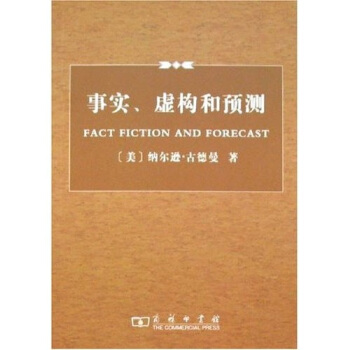
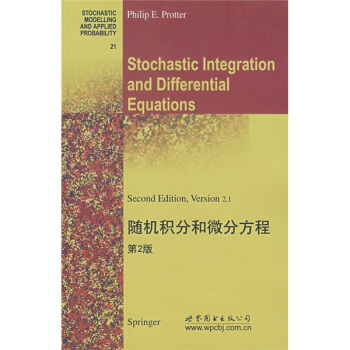
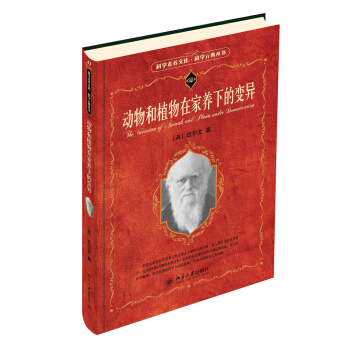
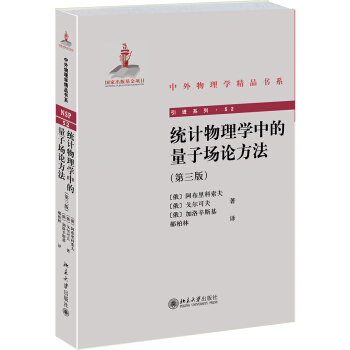


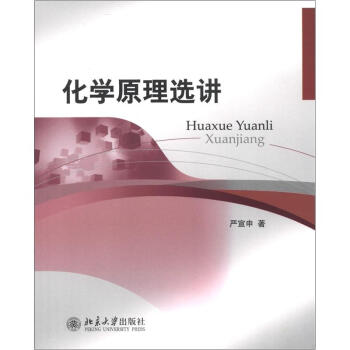
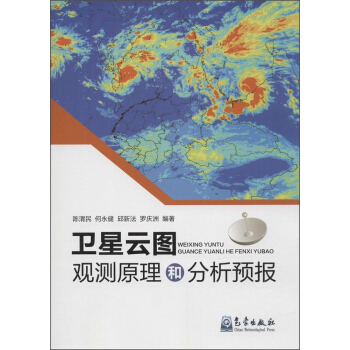
![现代动力系统理论导论 [Introduction to the Modern Theory of Dynamical Systems] pdf epub mobi 电子书 下载](https://pic.tinynews.org/10888247/83f4e6dd-457b-4ba7-8dd5-7a2e13453591.jpg)
